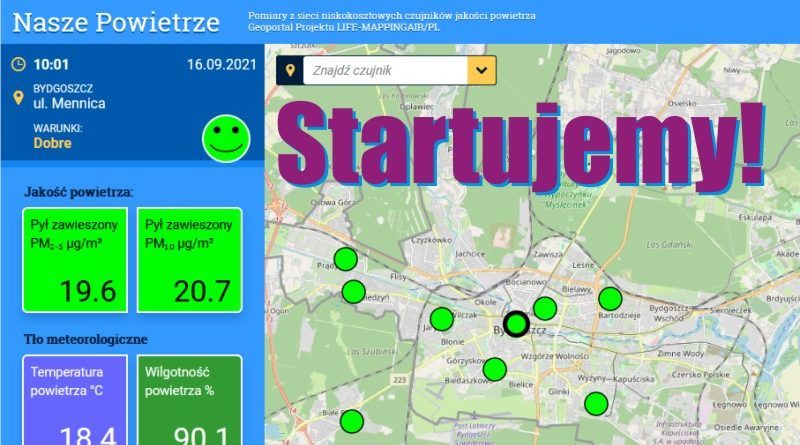Our measurement network is now available!
Tomorrow is the Lower Silesian Science Festival, on Saturday the European Week of Sustainable Development, so we are also taking this opportunity to start! Since today, the measurement network of particulate matter concentrations, built within the framework of our project, is officially operational. The measurement results are presented on the website: https://airquality.uni.wroc.pl/
The measurement network covers Wrocław, Bydgoszcz and selected towns in the vicinity of these cities – a total of 40 measurement points.
We present current and archival data on particulate matter concentration, air temperature and humidity.
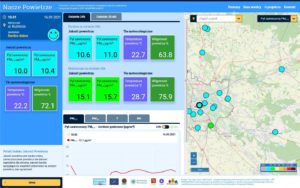
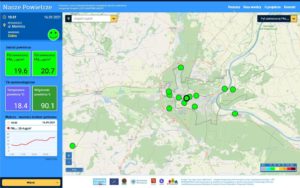
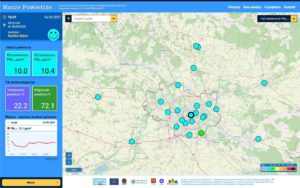
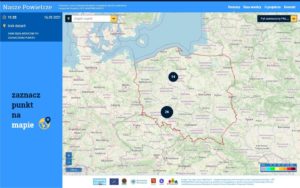
The network was created within the LIFE-MAPPINGAIR/PL Project and was built as a joint effort of the teams from the Department of Climatology and Atmospheric Protection of the University of Wrocław, Wrocław Centre for Networking and Supercomputing of the Wrocław University of Science and Technology and Bydgoszcz City Council.
Why did we build a network?
First of all, the better access to reliable air quality data, the more sensors we have, the better! As citizens, we want to know what conditions are near our homes, work, school… This is, of course, the main reason for the network.
Second is the quality of the data. The devices working in the network were not just taken “off the shelf”. They were designed within the Project to provide the best possible data quality at a relatively low cost. We tested different types of sensors and tried to choose the best ones. We applied solutions that reduce the possibility of measurement errors, such as a heated measurement path that eliminates the influence of fog, dew and other atmospheric deposits on the tested air sample. Our data is also constantly subjected to substantive control.
Third – location. We also put a lot of effort into choosing the best measurement locations so that the results are representative for a larger area (e.g. housing estate) and not only for one “garden” where the sensor is standing. Of course, the locations are a compromise – we had to take into account safety concerns, installation possibilities, access to power supply… Nevertheless, we did our best to place the sensors in optimal locations.
Fourthly, we will use the data not only to inform about air quality and analyze its conditions. The measurement network will be used to improve our air quality forecasts. We have been creating such forecasts and making them available on the NaszePowietrze portal for several years now, but we are constantly working on and developing them. The more data to “feed” the model, the more data to verify the results – the better and more accurate the forecasts.
We hope it will be useful to local communities and provide useful data. We also count on the data from the web to constantly improve the information about air quality that we prepare in our Project. We will also use the network in education – it’s a great tool to show the processes that determine air quality, to make people aware of the risks associated with it, but also – to present good practices in air quality measurement. There will be more and more low-cost sensors around us, and we would like the data from them to be of the best quality.
How big is the network?
Our measurement network consists of 40 sites, 25 in the Wrocław metropolitan area and 15 in the Bydgoszcz metropolitan area. Locations of the sensors are listed below.
- Białe Błota ul. Czysta
- Bydgoszcz ul. Białostocka
- Bydgoszcz ul. Gajowa
- Bydgoszcz ul. Mennica
- Bydgoszcz ul. Nakielska
- Bydgoszcz ul. Nakielska
- Bydgoszcz ul. Piekary
- Bydgoszcz ul. Puszczykowa
- Bydgoszcz ul. Skrajna
- Bydgoszcz ul. Smukalska
- Bydgoszcz ul. Staszica
- Dzierżoniów ul. Kopernika
- Jelcz-Laskowice ul. Szkolna
- Kąty Wrocławskie ul. 1-go Maja
- Kcynia ul. Wyrzyska
- Oleśnica ul. Słowackiego
- Ostromecko ul. Leśna
- Solec Kujawski ul. Słowackiego
- Strzelin ul. Sienkiewicza
- Środa Śląska ul. Górna
- Trzebnica pl. Błonia T.
- Trzebnica ul. Norwida
- Wilczyce ul. Wrocławska
- Wisznia Mała ul. Wrocławska
- Wrocław Bulwar Ikara
- Wrocław ul. Dawida
- Wrocław ul. Gorlicka
- Wrocław ul. Górnickiego
- Wrocław ul. Grabiszyńska
- Wrocław ul. Kosiby
- Wrocław ul. Krajewskiego
- Wrocław ul. Kurpiów
- Wrocław ul. Kuźnicza
- Wrocław ul. Pęgowska
- Wrocław ul. Polna
- Wrocław ul. Przybyszewskiego
- Wrocław ul. Rumiankowa
- Wrocław ul. Słowicza
- Wrocław ul. Solskiego
- Wrocław ul. Starogajowa
What’s next?
You are welcome to use our data. There will probably still be some imperfections, but we will improve them. Soon we will add more functionalities – such as possibility of downloading measurement data. In the future we would also like to install additional sensors in selected devices – measuring the concentration of tropospheric ozone. It is an important pollutant, so we want to test the possibilities of using low-cost sensors to measure this compound.
